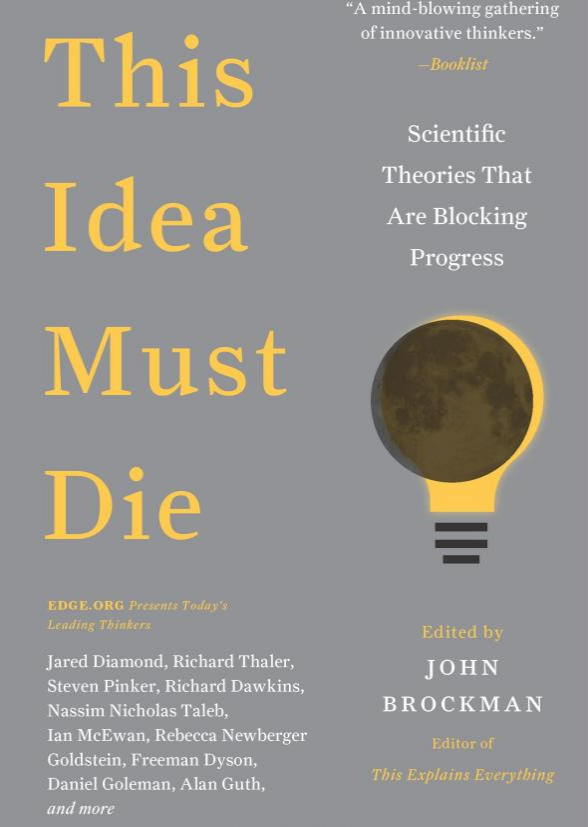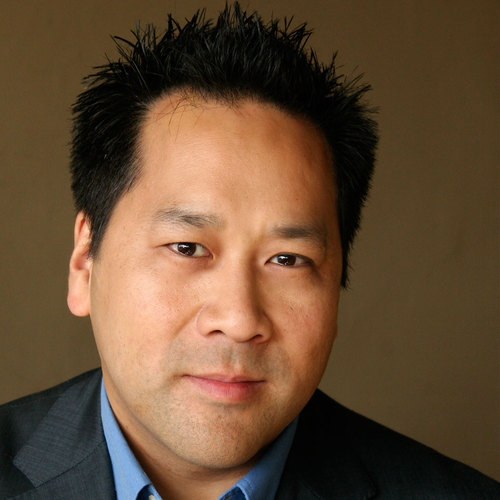| In the book ‘This Idea Must Die: Scientific Theories That Are Blocking Progress’, there are two entries which caught my eye because they both belong to interests of mine: geometry and calculus. The two articles are provided below. [I believe it is “fair use” as a reprint of these two articles helps not only to promote the book but also to promote the two authors (by the Streisand effect in “applied communication theory”, the best strategy to fight these two articles would have been to be quiet about it).] The idea of a provocative title and the concept of attacking various ideas is effective. Provocations trigger thoughts. The editors of the book knew what they were doing. It is also commercially a successful book and I can only recommend it. Still, on a very general note, the history of science shows that it scientific ideas rarely die. Yes, they can fall out of fashion but often come back in some or the other way or are used in legacy situations. Newtonian mechanics for example has been replaced by relativity theory but the theory is still used in daily life computations like space explorations, possibly with some relativistic corrections. The theory has been refined but it has not died. It is the unscientific ideas and speculations not based on experiments which have died for good. |

|
But here is the summary of the two articles under consideration:
| Rovelli pledges to go beyond geometry in order to understand space time. | Lih repeats the argument for more computer science than calculus. |
My main objection is that both geometry and calculus mean much more what the field originally signified. Much of physics is pure geometry. The poster child is general relativity or gauge theory which both are geometry. The power of geometry is illustrated that the latest Nobel prize was given for geometric ideas in physics (neither string theory nor loop quantum gravity have yet won a Nobel prize!). Calculus on the other hand is used in various generalizations including discrete settings, the focus of this blog. But the use of calculus goes much wider: generating functions or Fourier theory help to analyze discrete structures. In computer science, the complexity of algorithms uses functions in time t which are analyzed using limits. Even very calculus and physics heavy topics like Stokes theorem have very practical applications. The integral theorems are frequently left out in multi variable courses one reason being that they are harder subjects an other that some don’t see the relevance beyond physics. Here is a very concrete example from a very applied problem. How do we compute the volume of a geometric object in space which is given as a triangular mesh. It turns out that the best known way uses the divergence theorem (a particular case of the general fundamental theorem of calculus in higher dimensions): we can just add up the fluxes over all triangles using a vector field with divergence 1. A computer scientist who does not know calculus would probably split up the body into small cubes and count cubes. The best programming skills could not beat the fundamental fact that with a mesh size of 1/n, integrating over the boundary has steps while integrating the solids has a
complexity. With n=1000, the second method would need 1000 times more resources. This is one of many examples, where calculus is essential to fundamentally improve on the complexity of the task. The example also illustrates that the study of the complexity uses calculus (applied computer scientists everywhere from computer vision to cryptology use it to express the complexity of tasks uses the Landau O notation). The call for ‘more programming’ and ‘less math’ is not the first. It is often expressed by folks who have seen little about the relation of math with computer science. Similarly, one can have the impression that statistics is independent of math or calculus. Also this has maybe be amplified that in the last decades not only the computer science departments but also the statistics departments have split from the mathematics departments. But there is much more to statistics than “big data” and much more to programming than making a machine do some stuff. Especially when dealing with lots of data or when computational time constraints appear, calculus helps to cut through the mess and speed up processes. On the theoretical side, it is hard to understand for example the central limit theorem, the “fundamental theorem of statistics” without calculus and in particular Fourier theory, which enters when one deals with characteristic functions. The topic of “real analysis” is generally considered crucial for applied fields like finance or economics, but it is actually just a fancy version of calculus. In the US, one calls things calculus, which in other places are called Analysis. Many real analysis courses are hard to distinguish it from a calculus course. A major difference is usually just the rigor or language. The two subjects climb the same mountains. Its just that “calculus courses” take the more pedestial approach while “real analysis courses” pursue more difficult paths or assume slightly less regularity, requiring more measure theory, topology and proof skills. Why a “physicist” is asked to put “geometry” on the death row and a communication scientist” was asked to trash calculus is hard to understand. One should have asked maybe an algebraist to attack geometry and a computer scientist to attack calculus. But maybe the editors could not find authors closer to the subjects. Not that I believe the two authors are unqualified: calculus and geometry are subjects which are common knowledge as they are taught early in schools. While geometry produces the foundation of many parts in physics, I agree with Rovelli, if one thinks of geometry as narrowly as say differential geometry. It is likely that we will need new models of space to understand quantum gravity. Still it is also very likely that a successful theory will be a geometric theory of some kind, geometric in the sense of Klein’s Erlanger program which brings in an algebraic aspect, the aspect of symmetry and symmetry is always close to invariants (Noether’s theorem or particle physics illustrates this). I see less the need to diminish the importance of calculus, even if one considers calculus in the narrow way as taught in schools. Here is an example close to the science of communication (Lih is from a school of communication). The father of communication, Claude Shannon was a mathematician who understood well the role of calculus in communication. The Shannon entropy for example
can hardly be appreciated without knowing calculus: it involves a function whose properties can only be appreciated when using derivatives (it is concave). The entropy functional has extrema which are essential everywhere in combinatorics: it is only through entropy that we can truly appreciate basic distributions in statistics. Much of more applied communication theory is also empirical data analysis close to other like psychology (perception), education (learning), economics (value), which all heavily borrow from calculus.



